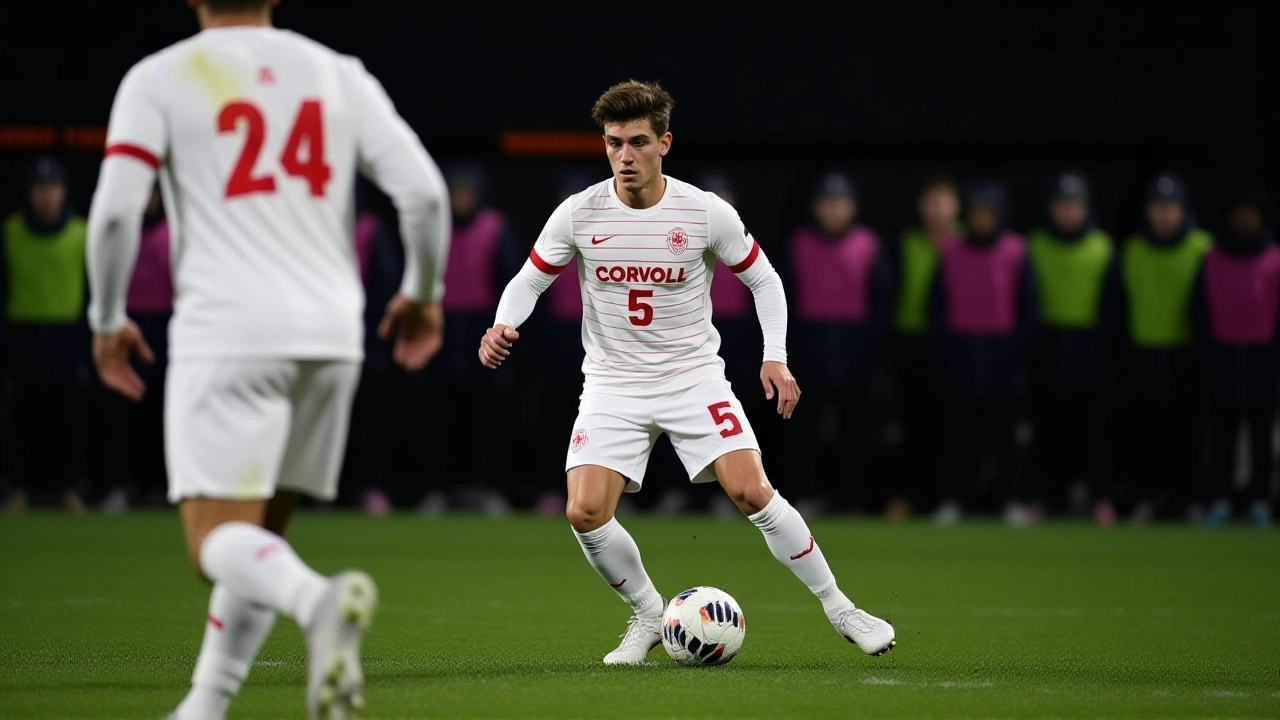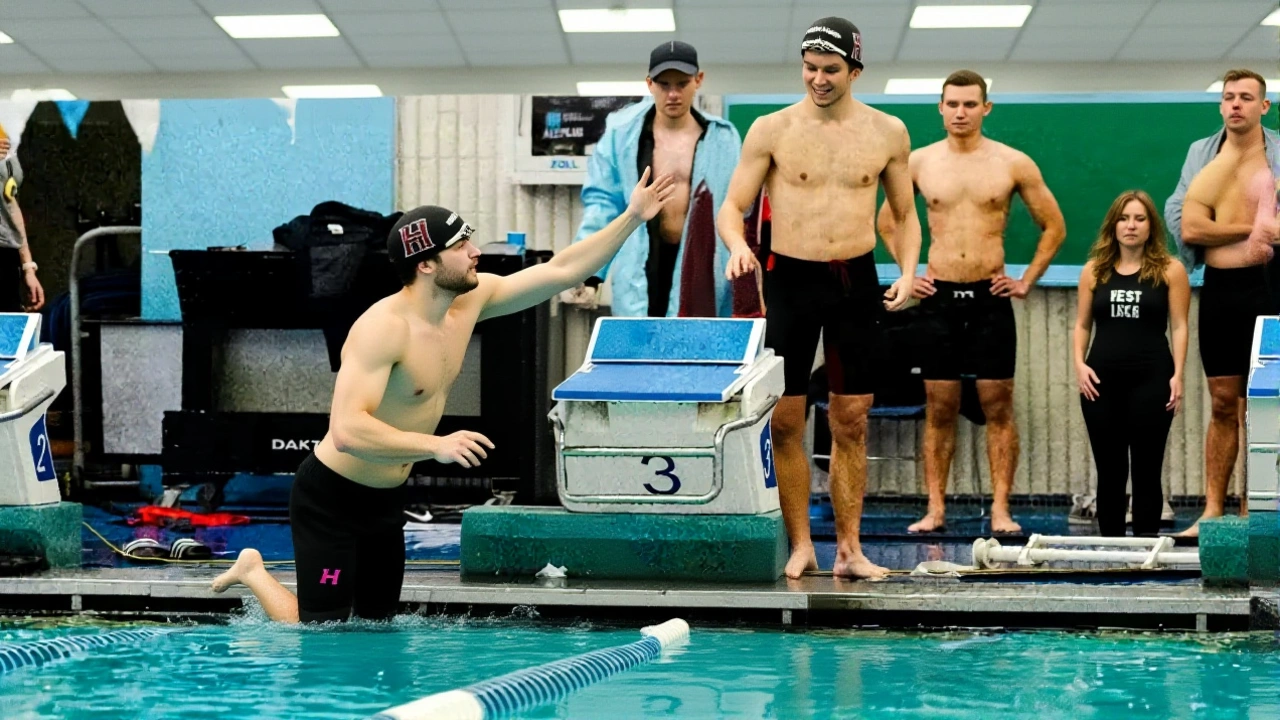Harvard’s men’s swimming and diving team kept its undefeated season alive with a commanding 180.50-119.50 victory over Columbia at Uris Natatorium on November 21, 2025. The win, secured just before 8 p.m. Eastern Time, improved the Harvard Crimson to 4-0 overall and 3-0 in Ivy League play, while the Columbia Lions fell to 1-3 (1-3 Ivy). It was Columbia’s final dual meet of the year — a season that began with promise but has since been defined by narrow losses and dominant defeats.
Harvard’s Depth Shines in Freestyle and Relay Events
The Crimson didn’t need a single miracle swim to win — they just kept winning, one heat after another. In the 500 freestyle, Harvard swept the top four spots: Pablo Martinez led the charge with a time of 4:23.38, followed by Ognjen Pilipovic (4:25.18), William Mulgrew (4:30.84), and Anders Aistars (4:33.08). That kind of depth is what separates top-tier programs from the rest. And it wasn’t just the 500. In the 1,000 freestyle, freshmen Mulgrew and Martinez took first and second, finishing just 0.79 seconds apart — a rare display of freshman dominance at this level.
The relays told the same story. Harvard opened with a narrow 200 medley relay win — 1:26.83 to Columbia’s 1:26.94 — a difference of less than a tenth of a second. The winning team of Adriano Arioti, Joshua Chen, Maro Miknic, and Sonny Wang didn’t just win; they out-touched a highly ranked Columbia A-team by the slimmest of margins. Later, the 200 freestyle relay sealed the outcome: Wang, Marre Gattnar, Evan Croley, and Miknic clocked 1:18.88, nearly a full second faster than Columbia’s best effort.
Individual Stars Carry the Crimson
While the team depth was overwhelming, individual performances stood out. Adriano Arioti won the 200 backstroke in 1:42.93, a time that would rank among the top in the Ivy League this season. Joshua Chen followed with a 1:58.20 in the 200 breaststroke — a clean, powerful swim that kept Columbia’s hopes from gaining traction. Then came Maro Miknic, who turned the 100 butterfly into a personal showcase with a 46.50, the fastest in the meet. These weren’t just wins — they were statements.
Harvard’s coaching staff clearly emphasized consistency over spectacle. No one swam a world record. No one broke a school record. But they swam fast, smart, and in rhythm — exactly what you need to win dual meets. And when you win 12 of 17 events, as Harvard did, you don’t need fireworks. You just need execution.
Columbia’s Bright Spots Amid a Tough Season
For Columbia, the night wasn’t all disappointment. The Lions won three events — the 200 freestyle, and both diving events — and showed flashes of promise. Adam Wu took the 200 freestyle in 1:36.40, a solid time that hinted at future potential. But the real story was in the water above the pool.
Joseph Nicol dominated the 3-meter dive with a score of 358.35 — the highest of the night — and followed it with a second-place finish in the 1-meter (312.15). His teammate, Will Cooley, took third in the 1-meter with 300.60. Columbia Head Diving Coach Scott Donie was visibly proud. "Really exciting," he said after the meet. "It’s always good to open the meet with a win and Joe Nicol was clutch in the 3m. Will Cooley continues to get better and we’re starting to add in harder dives. A great showing all around."
That’s the silver lining for Columbia: development. The Lions lost by 61 points, but they didn’t fold. Nicol’s 3-meter dive was the highest score by any diver in the Ivy League this season. Cooley’s progress suggests the program’s future may lie in the water above the surface — not below it.

The Bigger Picture: Ivy League Dynamics and What’s Next
This meet wasn’t just about points — it was about momentum. Harvard entered the night with three straight Ivy wins. Columbia came off a 225-75 drubbing at Princeton just one week earlier. The gap between these teams isn’t just in the standings — it’s in culture, recruiting, and depth. Harvard’s program, built over decades, now features a pipeline of elite recruits from across the U.S. and abroad. Columbia, still rebuilding, relies more on development than star power.
Harvard’s next stop? The Minnesota Invitational Minneapolis from December 3-6, 2025 — a chance to test against non-Ivy powerhouses before the championship season. Columbia, meanwhile, has completed its dual meet schedule for 2025. Their focus now shifts to the Ivy League Championships in February — their last real shot to prove they belong in the upper tier.
Why This Matters Beyond the Pool
College swimming rarely makes headlines — but it’s where the quiet giants of NCAA athletics are made. Harvard’s perfect record isn’t just a stat line; it’s a reflection of institutional commitment. The Crimson swim team trains in a state-of-the-art facility, benefits from top-tier coaching, and recruits nationally. Columbia, despite its academic prestige, still struggles to match that level of investment.
And yet, there’s heart here. Nicol’s dives weren’t just scores — they were moments of pride for a team that’s been outmanned. Wu’s win in the 200 free? That’s the kind of result that keeps athletes coming back. In college sports, wins and losses fade. But the fight? That lasts.
Frequently Asked Questions
How did Harvard maintain such a dominant record this season?
Harvard’s 4-0 start stems from deep talent across all strokes and relays, with at least three swimmers per event finishing in the top four. Their 500 freestyle sweep and relay dominance reflect a program that recruits nationally and trains year-round, giving them an edge over teams like Columbia that are still rebuilding depth.
Who were the standout performers for Columbia?
Joseph Nicol was Columbia’s clear highlight, winning the 3-meter dive with 358.35 points — the highest score in the Ivy League this season. Will Cooley added third-place points in the 1-meter dive, and Adam Wu won the 200 freestyle. These performances suggest the diving program is improving, even as the swimming team struggles to compete across the board.
What’s the significance of Uris Natatorium in this rivalry?
Uris Natatorium, Columbia’s home pool, is one of the oldest aquatic centers in the Ivy League. While it’s not the largest or most modern, it’s known for its fast lanes and loud crowds. Harvard’s ability to win here — especially after a 150-point loss to Princeton just days earlier — shows their mental toughness and adaptability under pressure.
Why did Columbia’s swimming team struggle so much compared to its diving team?
Columbia’s diving program benefits from strong coaching under Scott Donie, a former Olympic diver, and focused recruitment. The swimming team, however, lacks the same depth of national recruits and faces stiff competition from Harvard, Yale, and Princeton, which consistently bring in top-tier sprinters and distance swimmers. The gap in funding and training infrastructure is evident in the results.
What’s next for Harvard and Columbia after this meet?
Harvard heads to the Minnesota Invitational (Dec. 3-6) to test against non-Ivy teams like Minnesota and Michigan State before the Ivy Championships. Columbia, having completed its dual meets, will focus on refining technique and preparing for the Ivy League Championships in February, where they’ll aim to improve on last year’s sixth-place finish.
How does this result compare to past Harvard-Columbia matchups?
Harvard has won 14 of the last 16 meetings between the two teams. The last time Columbia beat Harvard in a dual meet was in 2019, by a score of 157-143. Since then, Harvard’s program has grown significantly, while Columbia’s has been in transition. This 61-point margin is among the largest in recent years, underscoring the widening gap.
